There is a distinctive type of house in almost every town and village in Ireland. Large, imposing and austere outside, inside you are likely to find century-old fireplaces, cornicing and tiling in near original condition. Decades of quiet-living tenants have left features intact. Welcome to the parochial house, and there are plenty of them on the market right now.
If the picture in your head of a priest’s house is the one Fr Ted shared with Fr Dougal, Fr Jack and Mrs Doyle on Craggy Island, you’re not far wrong. No matter how small the village and despite typically housing only the priest and his housekeeper, these houses tend to be big. Unlike Fr Ted’s remote post, however, you’ll find most parochial houses are well located, within walking distance of town and village centres.
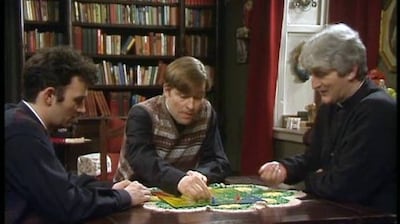
For those who have adequate funds “resting in [their] account”, there are five parochial houses listed for sale on myhome.ie this week. Another five have recently gone sale agreed. There are also four former parochial houses, now in private ownership, that have been refurbished and are changing hands. The most expensive is on the market asking €1.25 million.
Few churches have closed, but the trickle of parochial houses for sale is steady
There are 2,500 Catholic parishes in Ireland, according to a survey by the Association of Catholic Priests (ACP) last year. There are now just 2,100 priests ministering to them, however. A drop in vocations means individual priests are now ministering to a number of parishes. The days of a priest for every parish are gone, and with it the need for a priest’s house.
READ MORE
It’s not just priest numbers that are declining, so too are congregations. Few churches have closed, but the trickle of parochial houses for sale is steady.
With more than a third of Catholic priests in Ireland aged over 60 and just one person studying for the priesthood in the entire Archdiocese of Dublin last year, according to ACP figures, expect to see many more of these houses on the market.
The sale of individual parochial houses is small fry, however, compared with the wider divestment of property by Catholic orders in recent years. The Catholic Archdiocese of Dublin realised €95 million in 2019 from the sale of Holy Cross college in the north city, once Dublin’s major training college, according to a report by The Irish Times last year.
It was reported the Jesuit order received €65 million for the Milltown Park site in Ranelagh the same year. In 2015 the Redemptorist order received €42 million for the Marianella seminary, church and grounds in Rathgar. The sale of these three former seminaries flagged the end of the pipeline of priests and the end of the line for priests’ houses.
On the market
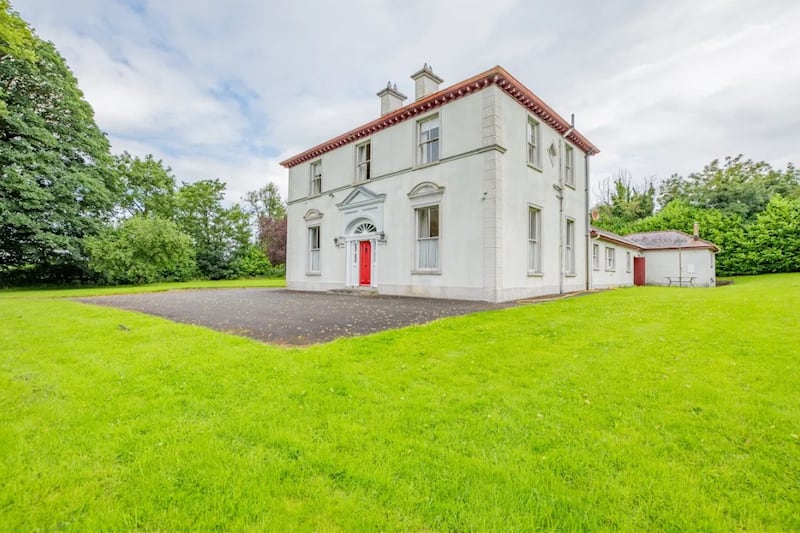
The Parochial House at Kilbeg, Carlanstown, Co Meath, was originally built in 1873 and is one of three parochial houses put up for sale by St Finian’s Diocesan Trust so far this year. This four-bed, four-bath property on nine acres is on the market for €595,000.
Inside, its owners have not done much to stage it for sale with no concessions made for any would-be buyers put off by its religious heritage. Holy pictures, crucifixes and statues remain in abundance.
Fans of period architecture will see past this to the highly decorative mosaic floor tiles in the hallway, double-height ceilings, marble fireplaces, cornices, ceiling roses, architraves and sash windows.
Reconstructed in 1908 with further renovations in 1995, the property is in good condition with its original features mostly untouched. The large doorway with fanlight and decorative stone and timberwork makes for a statement entrance to the 3,750sq ft home.
Outside there are external cornices at eaves level, a hipped slate roof with terracotta ridge tiles and rendered chimney stacks. Surrounded by mature trees, the house has a cut-stone former bell tower at the end of the garden.
The sale is managed by Padraic Murtagh of James L Murtagh and Associates who has sale-agreed two parochial houses in Meath this summer. One was a three-bay, two-storey-over-basement parochial house in Kildalkey dating from 1840 priced at €450,000. The sale was agreed for “significantly more”, he says. The other is a five-bed near Navan also dating from that era and sale agreed two weeks ago.
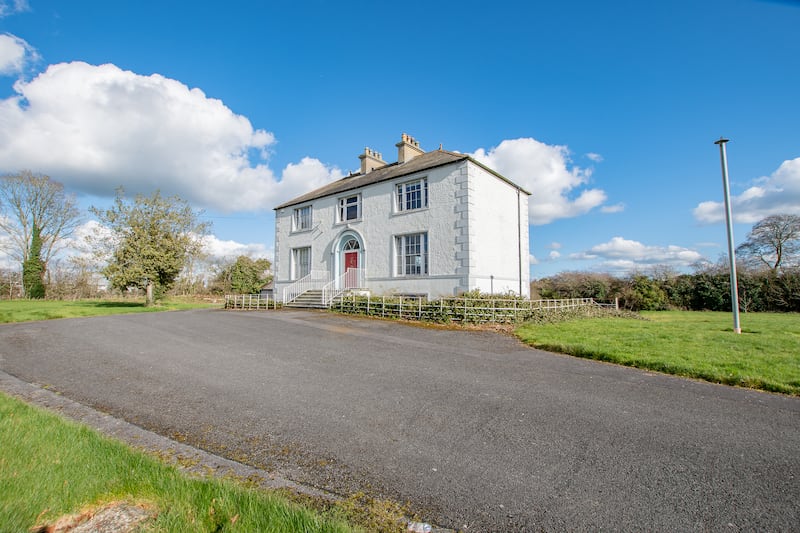
“Some period properties for sale are held together with wallpaper and paint, but in those three properties the wiring would be very good, the plumbing and the heating systems. They are solid sound properties, well minded over the years. Any upgrades that were ever needed were done,” says Murtagh.
Buyers of parochial houses like these are nearly always owner-occupiers, says Murtagh. “It’s someone who wants to use it as a family home,” he says. Many have outbuildings too and this attracts the self-employed or those who run businesses who use them for storage, he says. They often come with a few acres of tended gardens or land with mature trees attractive to hobby farmers.
The sale of these properties is good estate management, says Murtagh. “With the low supply of housing at the moment and the cost of construction, there is no point in having properties that are not being used.”
Beneath swirly 1970s carpets, expect to find the original floorboards barely tread
Parochial house design in Ireland seems to follow a consistent playbook. Large, imposing houses in the town – but set apart on generous grounds. Entrance hallways are often grand, as are the front reception rooms, used to have tea with everyone from bishops to the bereaved.
Estate agent photos of these properties show the reality of more modern-day parish life – grand diningrooms converted for use as parish committee meeting rooms, complete with filing cabinets, noticeboards, plug-in heaters and fire extinguishers.
Modest kitchens to the rear were typically fitted in recent decades, with a table at which to eat and two chairs.
Upstairs, there will be several bedrooms. One for the housekeeper of course, another for clergy visiting for a weeklong mission or Novena. The largest bedroom was perhaps held on standby for the bishop, in town once a year for Confirmation ceremonies. Beneath swirly 1970s carpets, expect to find the original floorboards barely tread.
In the four parochial houses for sale in Munster right now, two in Limerick and one each in Kerry and Waterford, the layout is similar.
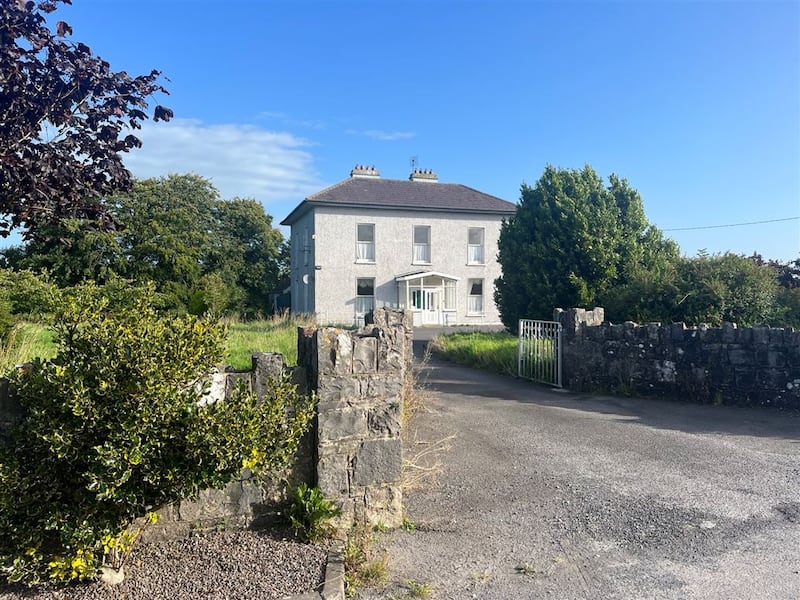
In Kilmallock, Co Limerick, there is an impressive three-bay, two-storey over-basement parochial house for sale through Carroll Auctioneers dating from around 1860. The €450,000 sale price includes 4.5 acres of gardens with mature trees and a coach house.
The cheapest former priest’s house on the market right now is at Ballinamult, 17km from Dungarvan in Co Waterford. The €150,000 sale price hints at the work needed to make it habitable. Of its sagging period features, handsome stairs and some original cast-iron fireplaces, doors and architraves remain. The house is located beside a church and graveyard.
For properties vacant more than two years, a buyer should be eligible for the vacant property refurbishment grant, say joint agents Barry Murphy Auctioneers/DNG Morrissey. The grant gives you up to €50,000 to renovate a vacant property and up to €70,000 if the property is derelict. The grant is inclusive of the VAT cost of the works.
With parochial houses being sold off by parish or church bodies, there is often value to be found
If you want to see what a former priest’s house turned family home can look like, there are four good examples on the market.
One of the most unrecognisable from its clerical roots is the opulently refurbished Cleariestown Hall, a four-bed 401sq m (4,316sq ft) house near Wexford town. It’s on the market for €1.25 million.
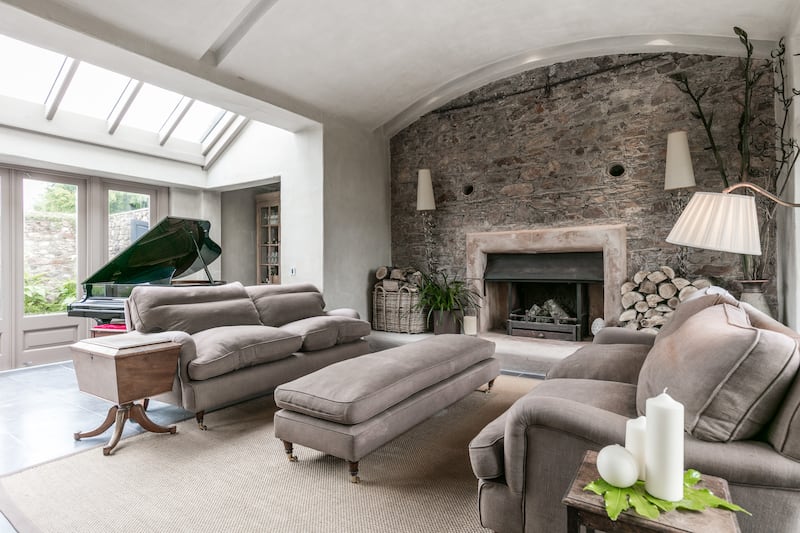
Built in 1877, the lofty ceiling heights, coving, big fireplaces, shutters and sash windows are all there. The house is now heavily styled to a showhouse finish with velour sofas, plush drapes, wall panelling, waterfall showers and two free-standing baths.
The owners have added a light-filled garden room too, an entertaining space with a large working fireplace and bifolding doors leading to a walled garden.
“It’s to die for, really,” says the agent Colum Murphy of Kehoe and Associates which also sold the property to its current owners back in 2005. It had ceased being a parochial house sometime in the 1990s, had changed hands and it was inhabitable when it sold 18 years ago.
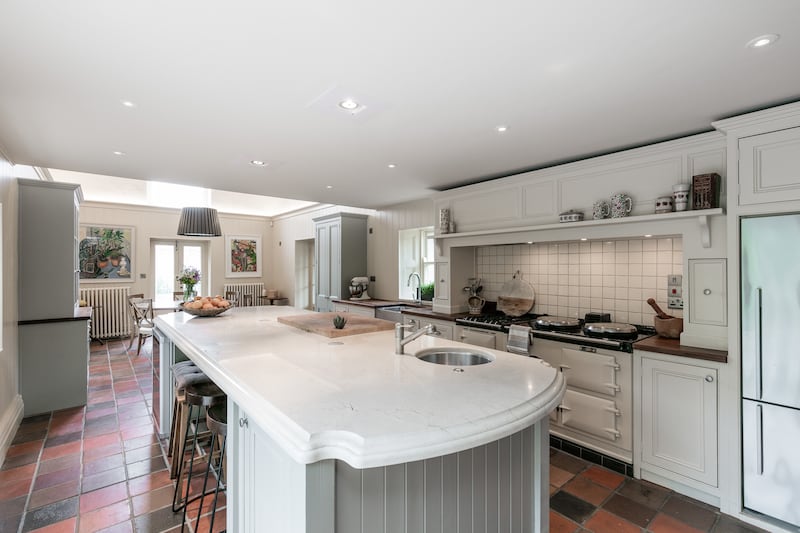
“With parochial houses being sold off by parish or church bodies, there is often value to be found, depending on how far you want to bring the property,” says Murphy. The high cost of renovation, however, is working against do-er uppers, he says. “You might think I’ll do it for €200,000 or €300,000 but there was multiple times that figure spent on this house.”
Former parochial houses have their fans, however. “We’ve sold numerous parochial houses over the years and buyers tend to be people who have an interest in older houses and see the value in a restoration project. They are less interested in the Ber rating of the house,” says Murphy.
While the tide on the Catholic Church as a central institution in Ireland may be receding, it leaves behind fine parochial properties for those with the money, time or vision to take them on.















